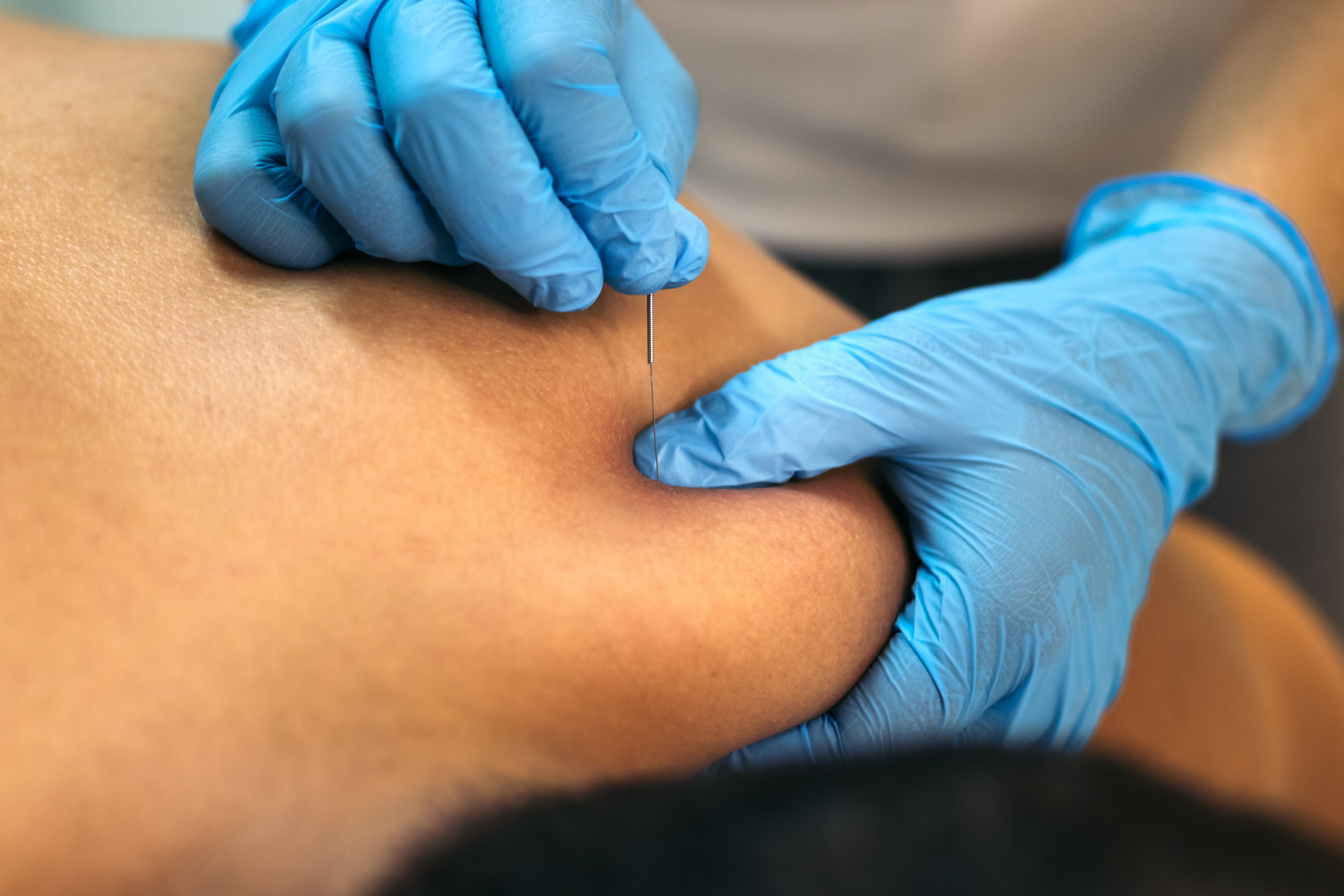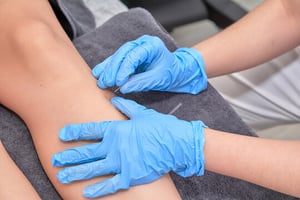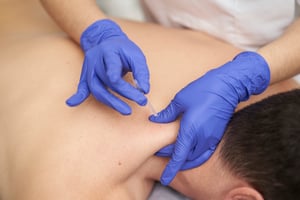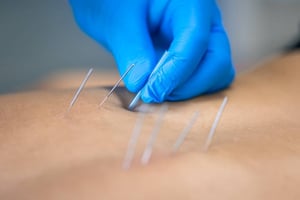Overuse injuries can be incredibly frustrating. They often creep in slowly, starting as mild...
5 Athletic Injuries That Respond Well to Dry Needling
Athletes put their bodies through rigorous training and repetitive motions that often lead to muscle tightness, joint discomfort, and stubborn soft tissue injuries. For those seeking faster recovery and lasting relief, dry needling has emerged as a powerful therapeutic tool. This technique targets trigger points—tight knots in muscles—to restore mobility and ease pain, making it especially valuable for active individuals looking to return to peak performance.
READ: Overcoming Common Barriers in Physical Therapy: A Patient's Guide
In Cheshire, dry needling is becoming a go-to solution for sports-related injuries. With its ability to reduce inflammation, improve circulation, and accelerate healing, it’s no surprise that athletes at all levels—from weekend warriors to competitive performers—are incorporating this modality into their recovery routines. This article explores five common athletic injuries that respond particularly well to dry needling, helping you determine if it’s the right fit for your treatment plan.

1. Hamstring Strains
Hamstring strains are a frequent setback for athletes involved in sprinting, jumping, or sudden directional changes. The pain often stems from overstretched or torn muscle fibers in the back of the thigh, leading to stiffness, weakness, and limited mobility. These injuries can be slow to heal, especially if scar tissue and muscle tightness persist.
Dry needling offers a targeted solution by releasing myofascial trigger points deep within the hamstring. The insertion of fine needles helps deactivate these tight knots, restore normal muscle tone, and promote better blood flow to the injured area. As a result, athletes often experience faster recovery times, improved flexibility, and a reduced risk of re-injury. For clients in Cheshire looking to bounce back from a hamstring strain, dry needling can be a pivotal part of their rehabilitation strategy.
2. Rotator Cuff Tendinopathy
Rotator cuff tendinopathy is a common overuse injury among athletes who participate in sports that involve frequent overhead motions—such as swimming, tennis, baseball, and volleyball. The condition results from repetitive strain on the tendons surrounding the shoulder joint, leading to pain, weakness, and a limited range of motion.
Dry needling can significantly aid in relieving the muscle tightness and trigger points that contribute to shoulder dysfunction. By targeting the deeper muscles of the rotator cuff, the technique helps reduce inflammation, increase blood flow, and restore proper movement patterns. For athletes in Cheshire experiencing shoulder pain or restricted mobility, dry needling offers a precise and effective treatment option that complements physical therapy and sport-specific rehabilitation.
READ: Identifying the Root Cause: The First Step in Effective Physical Therapy
3. Shin Splints (Medial Tibial Stress Syndrome)
Shin splints are a nagging issue for many runners, dancers, and athletes involved in high-impact sports. Characterized by pain along the inner edge of the shinbone, this condition is often the result of repetitive stress on the muscles, tendons, and bone tissue in the lower leg.
Dry needling helps by releasing tightness in the muscles surrounding the tibia, particularly the posterior tibialis and soleus. This targeted treatment reduces localized inflammation and improves blood circulation, accelerating the healing process. For athletes in Cheshire dealing with recurring shin pain, dry needling can provide the relief needed to return to training safely and confidently.
4. Plantar Fasciitis
Plantar fasciitis is a common complaint among runners, hikers, and athletes who spend long periods on their feet. It’s caused by inflammation of the plantar fascia—a thick band of tissue that runs along the bottom of the foot—leading to stabbing heel pain, especially during the first steps of the day or after intense activity.
Dry needling targets the small, deep muscles of the foot and lower leg that contribute to tension in the plantar fascia. By releasing tight trigger points and enhancing circulation, the technique helps reduce pain, improve flexibility, and restore normal movement. For active individuals in Cheshire, dry needling offers a non-invasive, drug-free solution to one of the most frustrating foot conditions, supporting quicker recovery and sustained performance.
5. IT Band Syndrome
Iliotibial (IT) Band Syndrome is a frequent issue for runners and cyclists, often presenting as pain on the outside of the knee that worsens with repetitive motion. The discomfort stems from inflammation where the IT band—connective tissue running from the hip to the knee—rubs against the femur, particularly during activities involving bending and straightening the leg.
READ: The Benefits of Personalized Rehab and Training Plans
Dry needling is especially effective in treating the tight muscles surrounding the IT band, such as the tensor fasciae latae and gluteus medius. By releasing deep-seated trigger points in these areas, dry needling reduces tension, enhances mobility, and supports more efficient biomechanics. Athletes in Cheshire struggling with lateral knee pain can benefit greatly from incorporating dry needling into their recovery regimen.
Is Dry Needling Right for Your Injury?
While dry needling has shown impressive results for a variety of athletic injuries, it’s not a one-size-fits-all solution. The effectiveness of the treatment often depends on the nature of the injury, the individual’s overall health, and their response to manual therapies. That’s why it’s essential to consult with a licensed physical therapist who understands the specific demands of your sport and your recovery goals.
At Promotion PT CT, the dry needling approach is always personalized. Whether you're dealing with a recent strain or managing chronic discomfort, a skilled provider will assess your needs and determine if this technique aligns with your rehabilitation plan. If you're in Cheshire and wondering whether dry needling could enhance your recovery, the right time to explore it is now.
Why Promotion PT CT is a Top Choice for Dry Needling in Cheshire
At Promotion PT CT, athletes receive care that’s rooted in expertise, precision, and a deep understanding of sports performance. The clinic’s experienced providers use dry needling as part of a comprehensive rehabilitation strategy, ensuring every treatment is tailored to the individual’s specific injury, sport, and recovery timeline.
The team specializes in performance rehab, making it an ideal destination for active individuals who want to return to their sport stronger than before. Whether you're recovering from a hamstring strain, managing chronic shin pain, or seeking relief from IT band syndrome, the therapists at Promotion PT CT apply advanced techniques—including dry needling—to address the root cause of your symptoms.
Explore more about their integrated approach on their Performance Rehab and Treatment Options pages, and discover why athletes across Cheshire trust this clinic for effective, hands-on care.
READ: Transforming Pain into Progress: Success Stories from ProMotion Physical Therapy
Get Back in the Game with Expert Dry Needling
When athletic injuries slow you down, finding the right treatment can make all the difference. Dry needling offers a powerful, evidence-based way to reduce pain, restore mobility, and accelerate healing—especially for conditions like hamstring strains, shoulder tendinopathy, shin splints, plantar fasciitis, and IT band syndrome.
If you’re in Cheshire and want to get back to your sport with confidence, the team at Promotion PT CT is ready to help. Their personalized dry needling treatments are designed to target the specific challenges active individuals face. Don’t wait to start your recovery—book a call today and take the next step toward lasting relief and peak performance.
-1.png?width=1269&height=380&name=Your%20paragraph%20text%20(13)-1.png)


